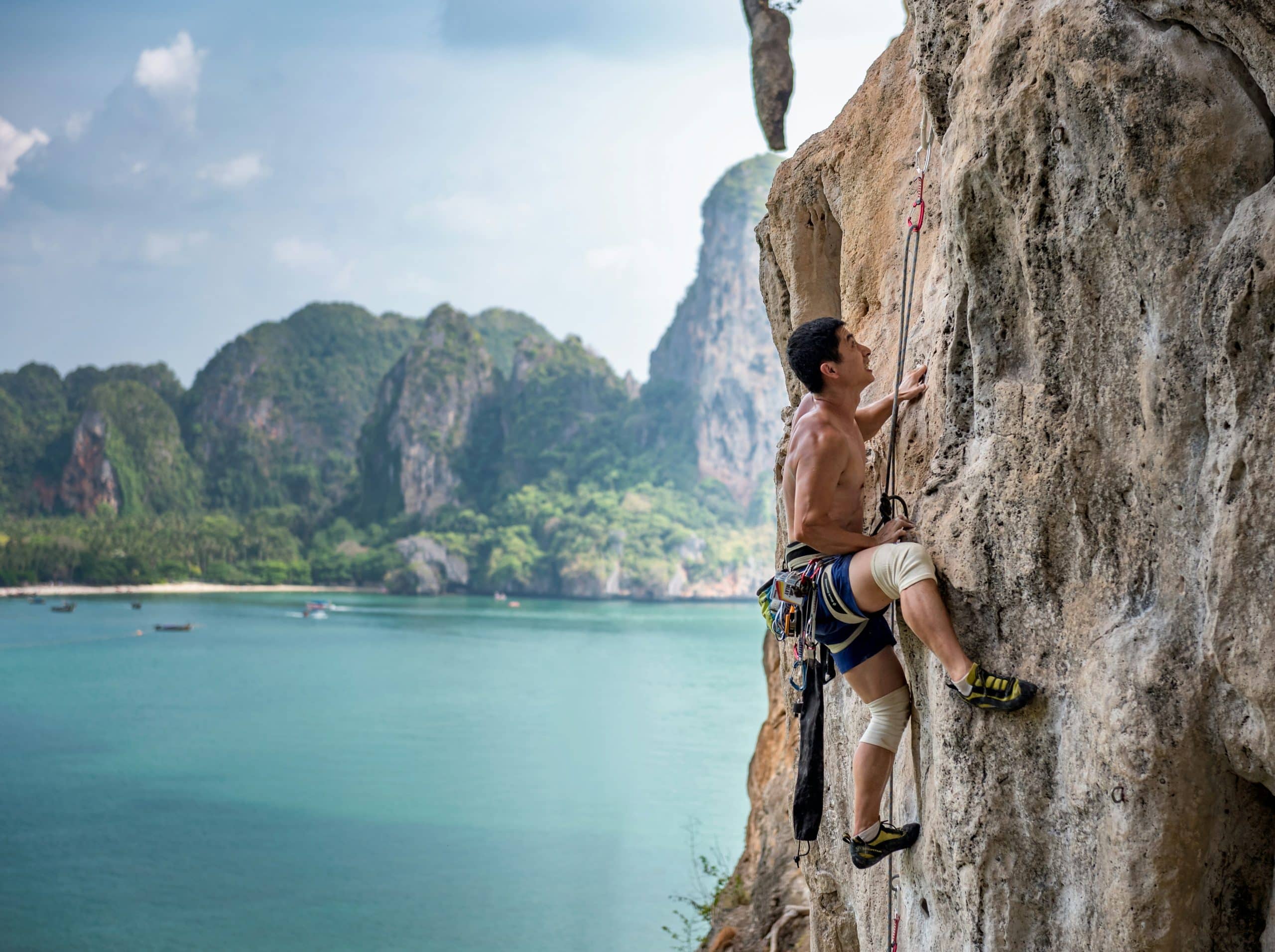When it comes to altitude training, many of you assert that it is only essential for mountaineers or those participating in high-altitude sports. However, athletes across a variety of disciplines use it as a secret weapon to enhance their performance. In a nutshell, altitude training is a method employed by athletes to increase performance in sea level sports. This method came to light after the 1968 Olympics held in Mexico City, which sits at an altitude of 2,240 meters, and many athletes struggled to compete due to the thin air.
These days, with the help of facilities simulating high-altitude environments, even sea-level athletes are able to take advantage of this training method. But what exactly happens to an athlete’s body during altitude training? How do they prepare themselves physically and mentally for the extreme conditions that accompany high altitudes and low oxygen environments? Let’s dissect the science behind altitude training and unveil its effects on athletes’ performance.
A lire également : Top 5 canyoning tours in Bali you can't miss
Understanding the Concept of Altitude Training
Before delving into the mechanisms of altitude training, it’s essential to clarify what it is and the science behind it. Its principle lies in the concept of hypoxia, a state in which the body or a region of the body is deprived of adequate oxygen supply at the tissue level.
At high altitudes, the oxygen pressure is lower, making it harder for oxygen to enter our blood vessels and be transported to our muscles. This is why you may find it difficult to breathe or exercise at high altitudes. When athletes train under these hypoxic conditions, their bodies attempt to compensate for the low oxygen levels by producing more red blood cells to carry oxygen to their muscles. This process, known as erythropoiesis, is the primary reason why athletes use altitude training as a strategy to improve their performance.
En parallèle : How can sports contribute to promoting gender equality and empowerment in schools?
Physiological Adaptations in Response to Altitude Training
When athletes first arrive at high altitudes, they face a challenge: their bodies aren’t yet acclimatized to the low oxygen levels. Their first workouts often feel more difficult, and they can’t exercise as intensely as they can at sea level. However, their bodies soon start to adapt to these new conditions to enhance oxygen delivery to muscles.
The main adaptation is an increased production of red blood cells, boosting the blood’s oxygen-carrying capacity. Studies have shown that this erythropoiesis can continue for several weeks after arrival at altitude and persists for a few weeks after return to sea level. Other physiological adaptations include an increase in the number of small blood vessels in muscles, more effective oxygen usage by muscles, and enhanced buffering capacity to deal with the higher levels of lactic acid that accumulate during exercise at altitude.
How Athletes Prepare for Altitude Training
Preparation is key for athletes before heading to high altitude environments. The first step is often a medical evaluation, as altitude sickness can be a risk. Using data from academic databases like Google Scholar, athletes and their trainers can research the effects of altitude on the body and develop training regimens that gradually increase intensity to help the body better adapt to the lower oxygen levels.
In addition to physical training, diet also plays a crucial role. Athletes often consume a diet high in iron to facilitate the production of more hemoglobin, the oxygen-carrying component of red blood cells. Hydration and maintaining adequate energy intake are also essential, as athletes often find they need to consume more calories at altitude.
Altitude Training Strategies for Sea Level Sports
For sea-level athletes looking to get the benefits of altitude training, several strategies are available. One of the most common methods is “live-high, train-low.” This involves living at high altitudes to reap the benefits of increased erythropoiesis, but training at lower altitudes where athletes can maintain high-intensity workouts without the limitations of hypoxia.
An alternative strategy is intermittent hypoxic training, where athletes remain at sea level but perform some of their training sessions in a hypoxic environment. This can be achieved through the use of altitude tents or chambers that simulate the conditions of high altitude.
Altitude Training: A Legal Performance Enhancer
Altitude training has come under scrutiny over the years, with some critics arguing that it provides an unfair advantage. However, elite athletes from around the world continue to use it as a key part of their training regimen. Its effects on performance are undeniable. Moreover, unlike many forms of performance enhancement, altitude training is natural and legal.
Training at altitude is a complex, multifaceted issue. Preparing for and adapting to high altitude and low oxygen environments in sports is a meticulous process that requires careful planning, monitoring, and understanding of the physiological changes that occur in the body. Despite the challenges, the benefits to athletes who can effectively incorporate altitude training into their regimen are significant.
With advances in technology and more access to research, we are likely to see more athletes turning to altitude training to gain the competitive edge. Even if you’re not an elite athlete, understanding the science behind altitude training might just inspire you to take your workout to new heights.
The Mental Aspects of Altitude Training
The physical implications of altitude training are often the primary focus, but one cannot overlook the mental aspects. The body’s response to the low oxygen conditions of high altitudes doesn’t just happen in the muscles and blood vessels – it also takes place in the brain. Athletes need to maintain a strong mental disposition to combat the mental fatigue associated with low oxygen levels. They often employ techniques such as mindfulness, visualization, and goal setting to remain mentally resilient during training.
Proper sleep hygiene becomes increasingly important at higher altitudes. Sleep disturbances are common due to the body’s struggle to get enough oxygen during rest. Athletes need to ensure they’re getting quality sleep to aid recovery and facilitate the physiological adaptations to altitude exposure. Some athletes use sleep trackers to monitor their sleep patterns and make necessary adjustments.
In addition to these mental strategies, athletes also need to manage the psychological stress that can come with training in an unfamiliar environment. Strategies for managing stress and anxiety, such as deep-breathing exercises, yoga, and progressive muscle relaxation, can all be beneficial.
Athletes use these techniques and strategies to better adapt to the challenges posed by altitude training. This resilience and adaptability are key factors in their ability to thrive in these conditions and ultimately improve their performance.
The Potential Risks of Altitude Training
It’s also important to highlight the potential risks associated with altitude training. While it does offer numerous benefits, it can also pose some health risks if not managed correctly.
One of the major risks is acute mountain sickness (AMS). Symptoms of AMS can range from mild to severe and include headaches, nausea, dizziness, and difficulty sleeping. In severe cases, it can progress to High Altitude Pulmonary Edema (HAPE) or High Altitude Cerebral Edema (HACE), both of which can be life-threatening.
Athletes also need to be aware of the potential for overtraining. With the body working harder due to the low oxygen levels, the risk of overtraining increases. Overtraining can lead to injuries, decreased performance, and a weakened immune system. It’s crucial to monitor training volume and intensity and to ensure adequate recovery periods.
Conclusion
Altitude training is a complex process that requires careful preparation and management. While it can provide significant performance improvements for athletes, it’s also important to be aware of the potential risks and to take precautions to mitigate these.
The role of mental resilience in adapting to the challenges of altitude training shouldn’t be underestimated. Sleep hygiene, stress management, and mental conditioning are key to maximizing the benefits and minimizing the risks of altitude training.
The potential risks of altitude training, including acute mountain sickness and overtraining, should not be overlooked. Proper preparation, monitoring, and recovery are crucial to ensuring safe and effective training at altitude.
Whether you’re an elite athlete looking to gain a competitive edge or an amateur fitness enthusiast seeking a new challenge, understanding the science behind altitude training can help optimize your performance and ensure your safety. As we continue to push the boundaries of human performance, altitude training is likely to remain a valuable tool for athletes around the world.






